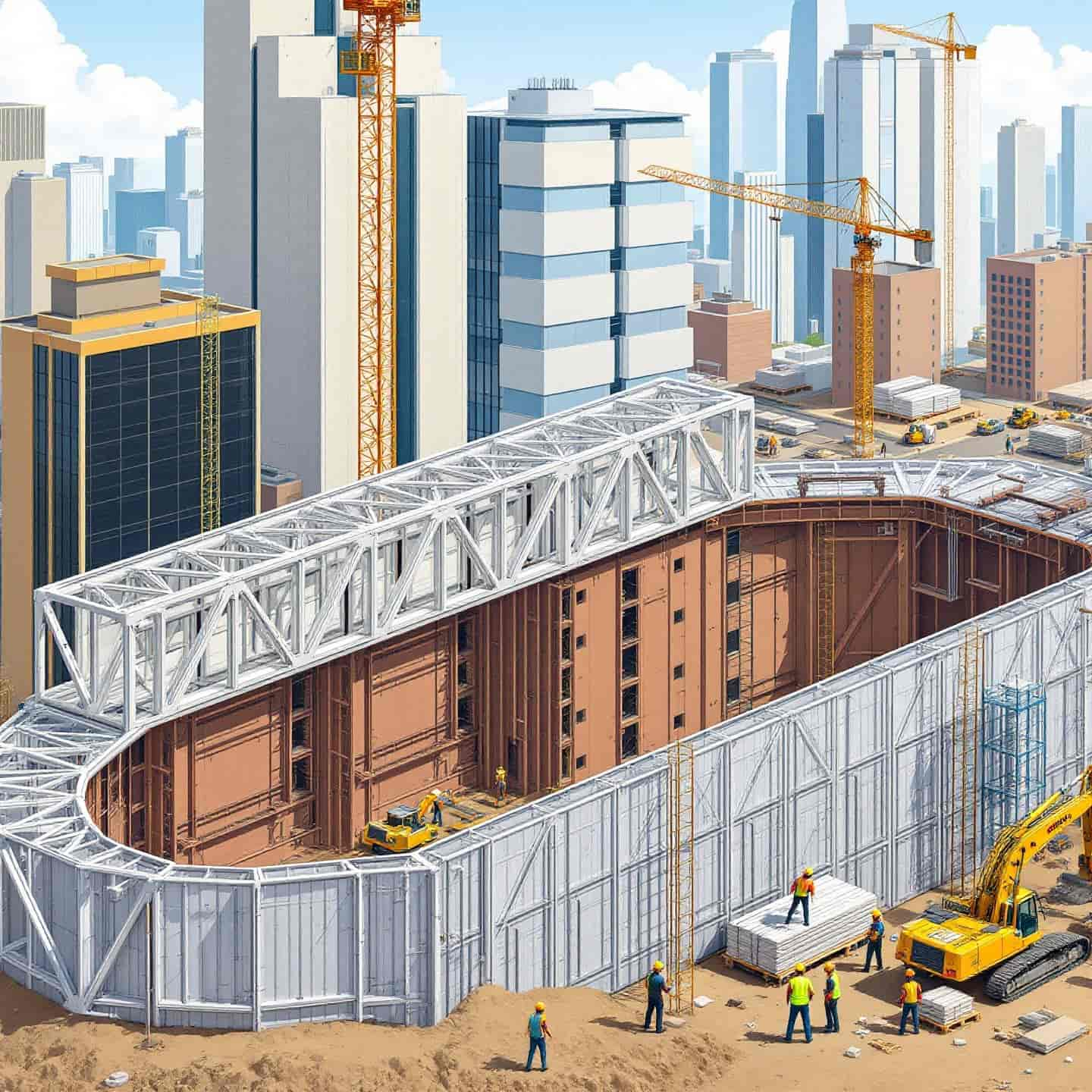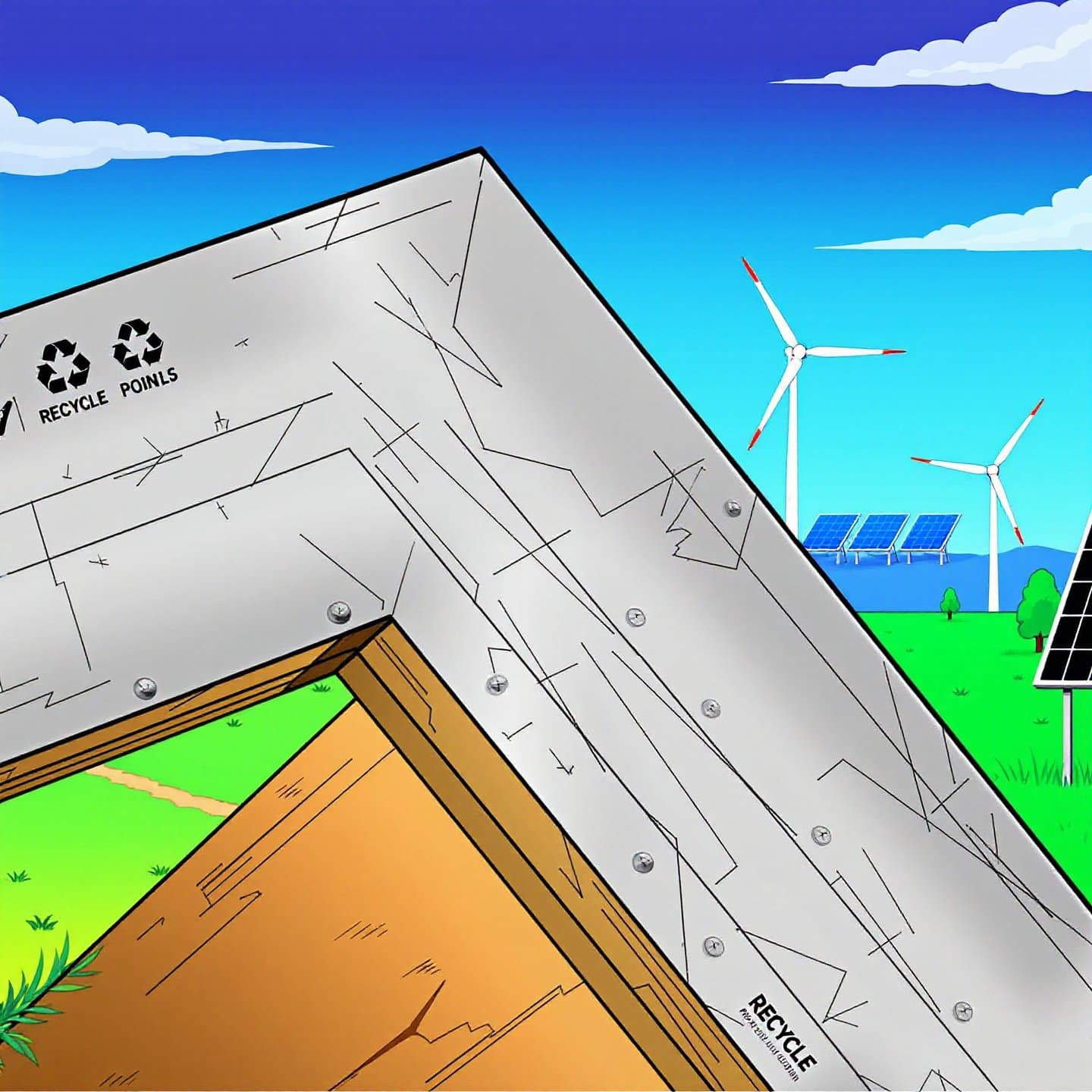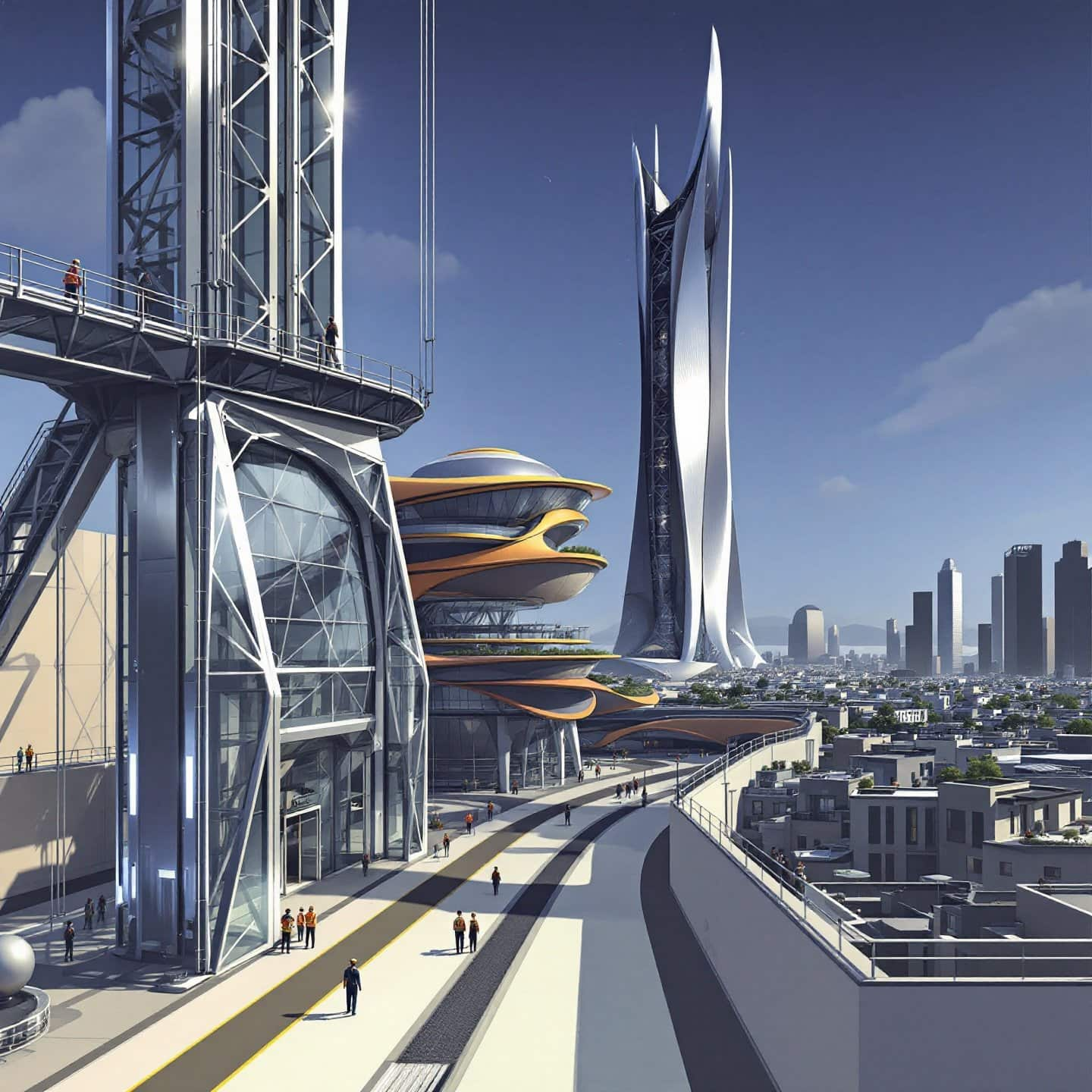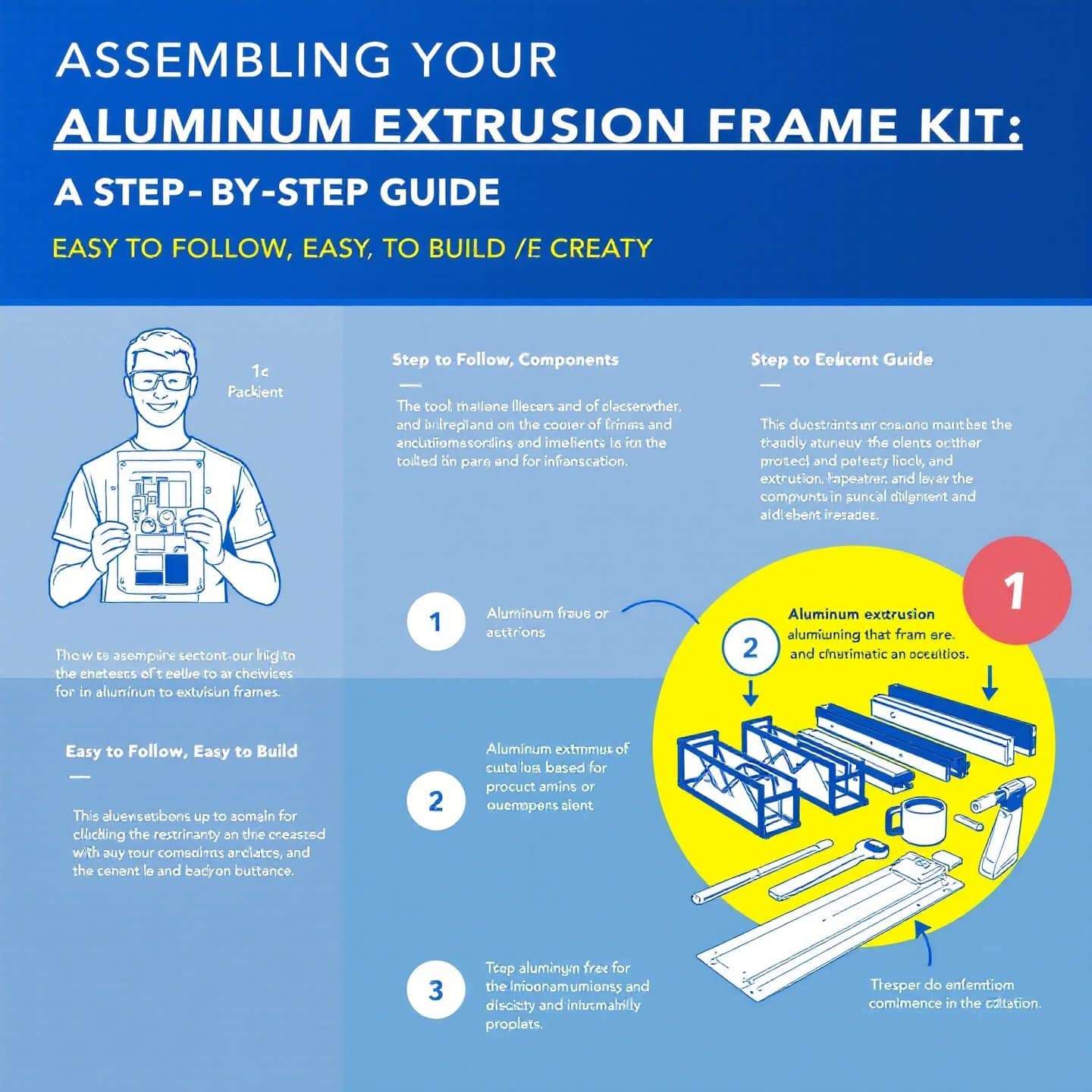Aluminum Structural Framing: Why It’s the Ultimate Choice for Versatile Builds
Dec 09, 2024
In today's rapidly evolving construction landscape, aluminum structural framing has emerged as a pivotal component, redefining how structures are designed and built. This innovative system is renowned for its adaptability and has become a cornerstone in various industries, ranging from industrial automation to residential architecture. But what makes aluminum framing such a compelling choice?
At the heart of its appeal is the inherent versatility of aluminum framing systems. These systems utilize structural aluminum extrusions , which are engineered to be both lightweight and robust, offering a high degree of customization without compromising on strength. This makes them ideal for a wide array of applications, from crafting intricate architectural facades to constructing durable industrial workstations.
One of the key factors driving the popularity of aluminum structural framing is its ability to integrate seamlessly with other materials and components. This flexibility allows for easy modifications, catering to the dynamic needs of modern construction projects. For instance, as noted by Montech Conveyors , aluminum framing systems are particularly advantageous due to their modular nature, which facilitates quick adjustments and enhancements, a feature that is increasingly valued in today's fast-paced industrial environments.
Moreover, the rise of sustainable building practices has further propelled the use of aluminum framing. Not only is aluminum highly recyclable, but it also offers energy efficiency benefits, making it a preferred choice for eco-conscious projects. As industries continue to seek out materials that align with sustainability goals, the demand for aluminum framing is expected to grow even further.
In conclusion, the growing adoption of aluminum structural framing is a testament to its unmatched versatility and efficiency. Whether you are looking to streamline manufacturing processes or create innovative architectural designs, aluminum framing provides a reliable and sustainable solution that meets the diverse demands of modern construction.
Imagine a material that not only enhances the structural integrity of your projects but also contributes to a sustainable future. That's what aluminum framing material offers. Known for its remarkable properties, aluminum stands out as a superior choice for construction and industrial applications. Let's delve into why aluminum is considered a game-changer in framing systems.
In conclusion, aluminum framing material offers a blend of strength, flexibility, and sustainability that is hard to match. As industries continue to prioritize eco-friendly and efficient building solutions, the advantages of aluminum extrusion frames make them an indispensable choice for modern construction challenges. Next, we'll explore the different types of aluminum structural framing systems available, highlighting their unique features and applications.

When it comes to constructing versatile and efficient structures, understanding the various types of aluminum structural framing systems is crucial. Two prominent systems dominate the market: modular aluminum framing and aluminum extrusion frame kits. Each offers unique features that cater to specific project needs, from simple constructions to complex industrial applications.
Modular aluminum framing systems are renowned for their adaptability and ease of use. These systems employ T-slot extrusions, which allow for easy assembly and disassembly, making them ideal for projects that require frequent modifications or expansions. The T-slot design enables components to be joined using connectors and fasteners that slide into the slots, providing a secure and flexible connection. This system is particularly beneficial in environments where changes are frequent, such as in manufacturing or laboratory settings.
Aluminum extrusion frame kits offer a comprehensive solution for creating robust and customized structures. These kits typically include all necessary components, such as connectors, fasteners, and brackets, allowing for straightforward assembly. They are designed to cater to specific project requirements, offering a tailored approach that ensures structural integrity and aesthetic appeal. The kits are especially useful for projects that demand precision and durability, such as industrial automation systems and custom machinery frames.
| Feature | Modular Aluminum Framing | Aluminum Extrusion Frame Kits |
|---|---|---|
| Ease of Assembly | High - Components easily slide into T-slots | Moderate - Pre-packaged kits simplify assembly |
| Flexibility | Very Flexible - Suitable for frequent modifications | Flexible - Customizable for specific needs |
| Cost-Effectiveness | Cost-Effective - Ideal for scalable projects | Varies - Dependent on customization level |
While both systems offer significant advantages, the choice between modular aluminum framing and aluminum extrusion frame kits largely depends on the specific demands of the project. For instance, if a project requires regular updates or expansions, the modular system's flexibility is invaluable. On the other hand, for projects needing precise and robust structures, the tailored solutions provided by extrusion frame kits are more appropriate.
In summary, understanding the unique characteristics and applications of these aluminum framing systems can greatly enhance the efficiency and effectiveness of a construction project. As we delve further into the applications across various industries, you'll see how these systems are leveraged to create innovative solutions tailored to specific needs.
Aluminum structural framing is a versatile solution that finds applications across a wide range of industries, thanks to its unique combination of strength, flexibility, and corrosion resistance. Whether it's in the bustling world of industrial automation or the visionary realm of modern architecture, aluminum framing is paving the way for innovative and efficient solutions.
In industrial settings, aluminum framing is a cornerstone of industrial aluminum solutions . Its adaptability and strength make it ideal for constructing workstations, machine guards, and conveyor systems. The modular nature of aluminum frames allows for quick reconfiguration, essential in dynamic environments where machinery and workflows frequently change. For instance, automated assembly lines benefit greatly from aluminum's lightweight properties, reducing the strain on support structures and improving overall efficiency.
Aluminum's role in architecture is equally transformative. With architectural aluminum profiles , designers can create stunning facades that not only enhance aesthetic appeal but also contribute to a building's sustainability. Aluminum facades can be intricately designed to include patterns and textures, offering a modern, sleek look while also supporting energy efficiency through features like integrated solar panels. This makes aluminum an attractive option for architects aiming to combine functionality with cutting-edge design.
In residential construction, aluminum framing is increasingly used for its durability and low maintenance needs. From window frames to railings, aluminum provides a sleek and modern aesthetic that complements contemporary home designs. Its ability to withstand harsh weather conditions without corroding makes it a preferred choice for exterior applications, ensuring longevity and minimal upkeep.
As we explore these applications, it becomes clear that aluminum structural framing is more than just a construction material; it's a catalyst for innovation across industries. Its ability to adapt to diverse needs while maintaining structural integrity makes it an indispensable part of modern construction projects. Up next, we'll delve into design considerations and best practices to ensure you make the most of this versatile material.

When embarking on a project involving aluminum structural framing, the choices you make during the design phase are crucial. Imagine you're tasked with creating a structure that must withstand varying environmental conditions while maintaining aesthetic appeal. Sounds complex? Let's simplify it by exploring the key considerations and best practices for designing with aluminum extrusions.
Choosing the appropriate aluminum framing materials involves assessing several factors to ensure your structure's success:
Designing with aluminum extrusions requires attention to detail to prevent issues like distortion or structural failure. Here are some best practices:
By following these guidelines, you’ll notice a significant improvement in the durability and visual appeal of your aluminum structures. Thoughtful design not only ensures the longevity of your project but also enhances its functionality and aesthetic value. As we move forward, we'll explore the installation and assembly insights that make working with aluminum framing systems both efficient and straightforward.
Assembling aluminum framing systems can seem daunting at first, but with the right approach and tools, it becomes a straightforward process. Aluminum extrusion frame kits are designed to simplify this task, offering all the necessary components for quick and efficient assembly. Let's delve into the step-by-step process of assembling aluminum framing, ensuring you make the most of these versatile kits.
Aluminum framing systems often use a variety of fastening methods to ensure robust connections:
| Step | Tip |
|---|---|
| Preparation | Double-check that all components are accounted for before starting. |
| Assembly | Use a rubber mallet to gently tap components into place if needed. |
| Final Inspection | Ensure all fasteners are tightened to avoid any structural issues later. |
By following these steps and utilizing the right tools, assembling aluminum framing becomes a manageable task that enhances the efficiency and stability of your project. As we move forward, understanding the low maintenance requirements of aluminum framing systems will further solidify their appeal in various applications.

One of the standout features of aluminum structural framing is its remarkable durability and low maintenance requirements. Unlike materials that require frequent upkeep to maintain their structural integrity and appearance, aluminum is naturally resistant to corrosion, making it an ideal choice for long-term applications. This resilience not only ensures the longevity of structures but also significantly reduces maintenance efforts and costs over time.
Aluminum's durability stems from its natural oxide layer, which acts as a shield against environmental elements. This protective layer is self-repairing, meaning that if it gets scratched, it will regenerate, maintaining its defense against corrosion. This property is particularly beneficial in harsh environments, such as coastal areas or industrial settings, where exposure to elements like saltwater or pollutants is common. According to Kalzip , aluminum's performance in such conditions is superior to many other materials, ensuring that structures remain sound and aesthetically pleasing for decades.
Despite its low maintenance nature, routine checks and cleaning can further enhance the lifespan of aluminum structures. Here are some maintenance tips to keep your aluminum framing in top condition:
By following these simple maintenance practices, you can ensure that your aluminum structures not only retain their strength and functionality but also their aesthetic appeal. Regular upkeep not only prolongs the life of the structures but also maintains their energy efficiency and reduces the need for costly repairs or replacements.
In conclusion, the durability and low maintenance requirements of aluminum structural framing make it a highly attractive option for various applications. Whether you are dealing with industrial setups or residential projects, understanding the maintenance needs of aluminum can lead to more sustainable and cost-effective building practices. As we wrap up our exploration of aluminum framing, the next section will summarize its benefits and encourage you to consider it for your future projects.
As we have explored throughout this article, aluminum structural framing stands out as a versatile, durable, and sustainable choice for a wide range of construction projects. Its unique properties, such as a high strength-to-weight ratio, exceptional corrosion resistance, and unparalleled design flexibility, make it an ideal material for various applications—from industrial automation to architectural marvels.
When considering your next construction project, the advantages of modular aluminum framing and aluminum extrusion frame kits are hard to ignore. These systems offer not just flexibility and ease of assembly but also the potential for significant cost savings over time. Modular systems are particularly beneficial for projects that require frequent adjustments or expansions, while extrusion frame kits provide a tailored solution for precise and durable structures. This adaptability is why industries are increasingly turning to aluminum framing systems to meet their evolving needs.
Moreover, choosing aluminum aligns with sustainable building practices. As a highly recyclable material, aluminum supports eco-friendly initiatives by reducing waste and conserving energy. This makes it a preferred choice for projects aiming to minimize environmental impact while maximizing efficiency.
In the realm of aluminum profiles, Suqian Sunmay Aluminium emerges as a leader. Their expertise in crafting premium-quality aluminum alloys and their commitment to innovation ensures that they meet the diverse needs of their clients. With a comprehensive range of products and surface treatments, Suqian Sunmay Aluminium offers solutions that not only meet but exceed international standards. Their dedication to customer satisfaction and cost-effectiveness makes them a reliable partner for your aluminum framing needs.
In conclusion, aluminum structural framing is more than just a building material; it's a forward-thinking solution that caters to the demands of modern construction. Whether you're looking to enhance the aesthetic appeal of a building, improve the efficiency of an industrial setup, or embrace sustainable practices, aluminum provides a robust and adaptable framework for success. Consider integrating aluminum framing systems into your next project to harness these benefits and drive innovation.
Aluminum framing provides a high strength-to-weight ratio, making it comparable to steel in many applications. It offers a tensile strength of up to 83,000 psi, depending on the alloy used, ensuring robust structural support.
Aluminum is favored for its lightweight, corrosion resistance, and recyclability. Its flexibility in design and ease of assembly make it ideal for diverse applications, from industrial to architectural uses.
Aluminum is highly recyclable, reducing waste and energy consumption. Its production is energy-efficient, especially when recycled materials are used, supporting sustainable building practices.
Aluminum framing is used in industrial automation for workstations and machine frames, in architecture for facades, and in residential construction for durable, low-maintenance structures.
Suqian Sunmay Aluminium specializes in high-quality aluminum profiles, offering a wide range of alloys and surface treatments, ensuring compliance with international standards and catering to global markets.
Whatsapp : +8617366266559
Email : sales@sunmayalu.com
Tel : +86 -17366266559
Hi! Click one of our members below to chat on